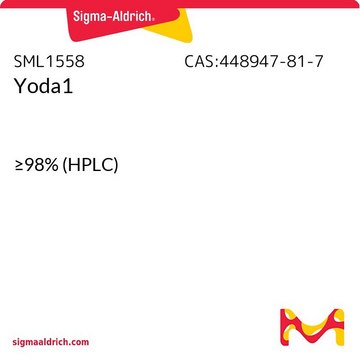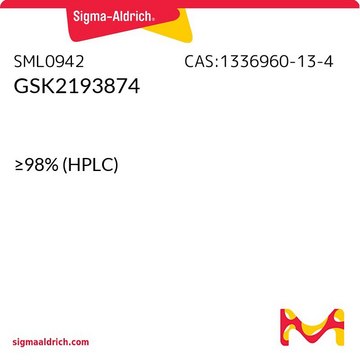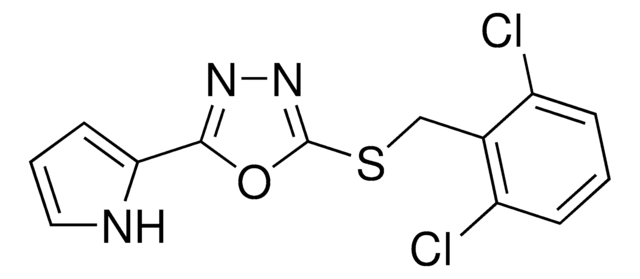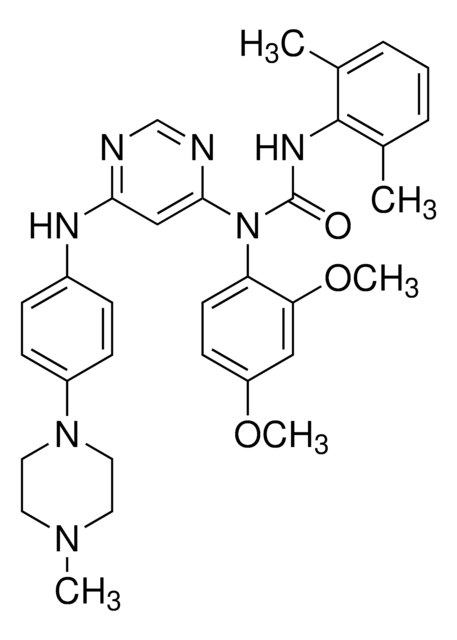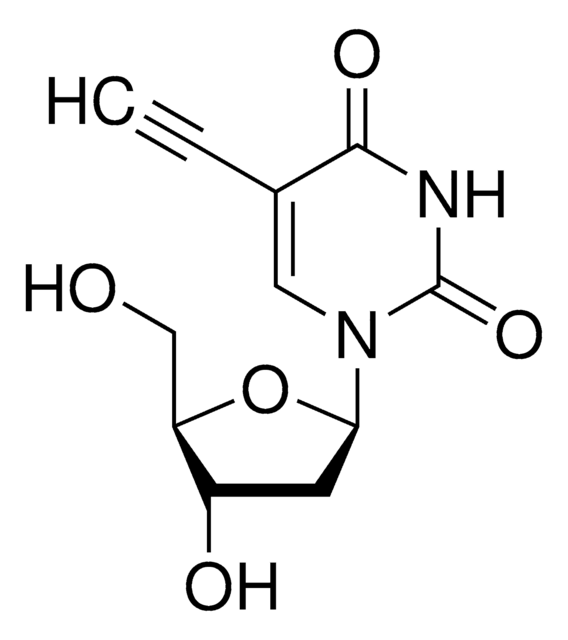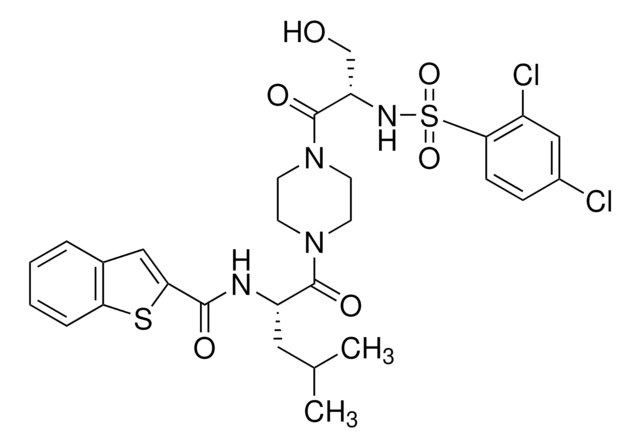SML3140
GsMTx4 trifluoroacetate
≥85% (HPLC), powder, TRPC1 and TRPC6 inhibitor
Sinônimo(s):
1-amino-Cy5-glucose, Cyanine-based 1-amino-1-deoxy-β-glucose conjugate, Cy5-linked 1amino-glucose, GCLEFWWKCNPNDDKCCRPKLKCSKLFKLCNFSF-NH2 trifluoroacetate(Disulfide: 2-17, 9-23, 16-30), Gly-Cys-Leu-Glu-Phe-Trp-Trp-Lys-Cys-Asn-Pro-Asn-Asp-Asp-Lys-Cys-Cys-Arg-Pro-Lys-Leu-Lys-Cys-Ser-Lys-Leu-Phe-Lys-Leu-Cys-Asn-Phe-Ser-Phe-NH2 trifluoroacetate (Disulfide: 2-17, 9-23, 16-30), Grammostola Mechanotoxin #4 trifluoroacetate, GsMTx-4 trifluoroacetate, L-GsMTx trifluoroacetate
About This Item
Produtos recomendados
Nome do produto
GsMTx4 trifluoroacetate, ≥85% (HPLC)
Nível de qualidade
Ensaio
≥85% (HPLC)
Formulário
powder
cor
white to beige
temperatura de armazenamento
−20°C
Descrição geral
Aplicação
Ações bioquímicas/fisiológicas
Código de classe de armazenamento
11 - Combustible Solids
Classe de risco de água (WGK)
WGK 3
Ponto de fulgor (°F)
Not applicable
Ponto de fulgor (°C)
Not applicable
Escolha uma das versões mais recentes:
Certificados de análise (COA)
It looks like we've run into a problem, but you can still download Certificates of Analysis from our Documentos section.
Se precisar de ajuda, entre em contato Atendimento ao cliente
Já possui este produto?
Encontre a documentação dos produtos que você adquiriu recentemente na biblioteca de documentos.
Nossa equipe de cientistas tem experiência em todas as áreas de pesquisa, incluindo Life Sciences, ciência de materiais, síntese química, cromatografia, química analítica e muitas outras.
Entre em contato com a assistência técnica